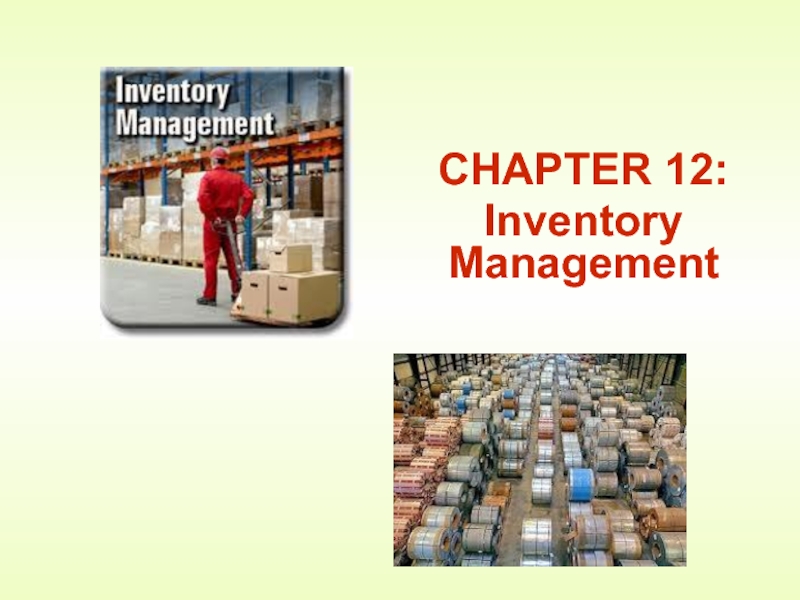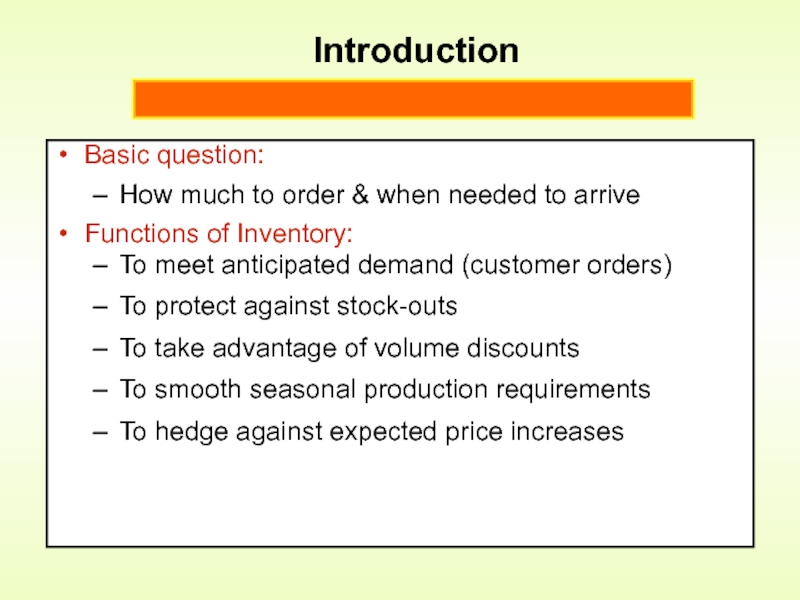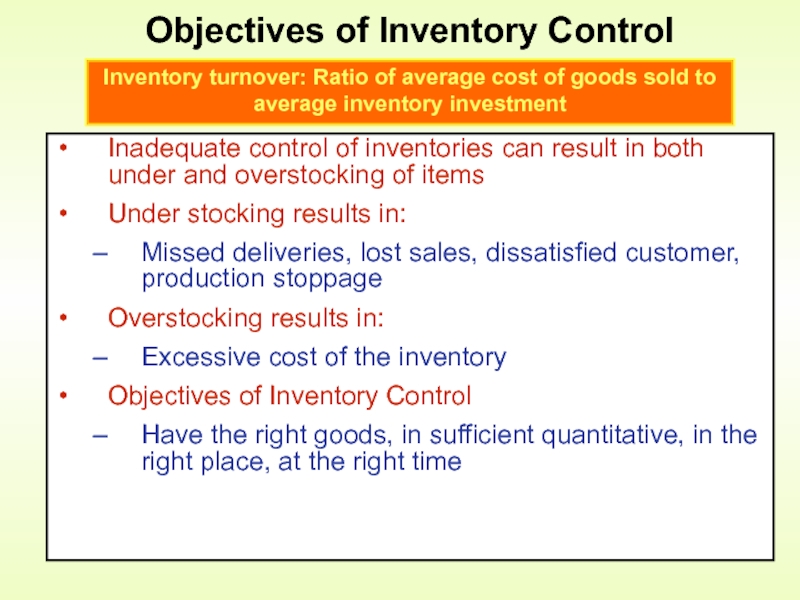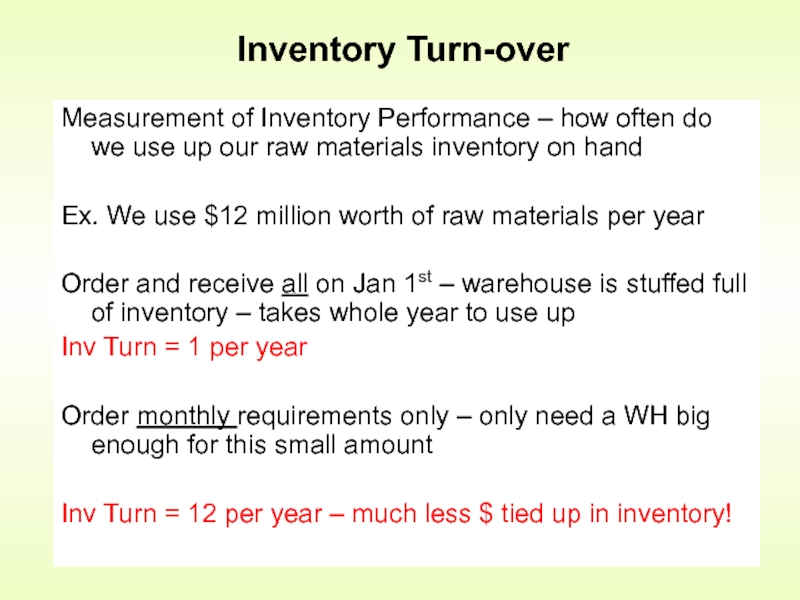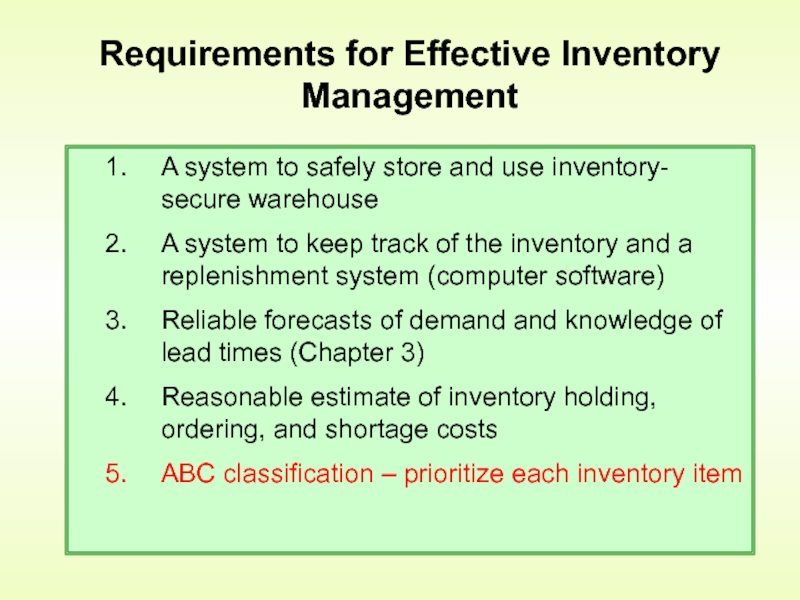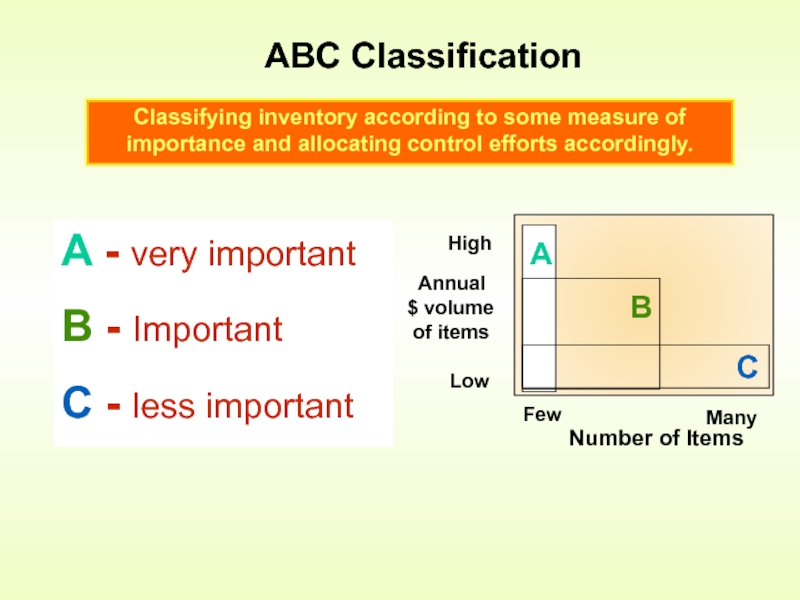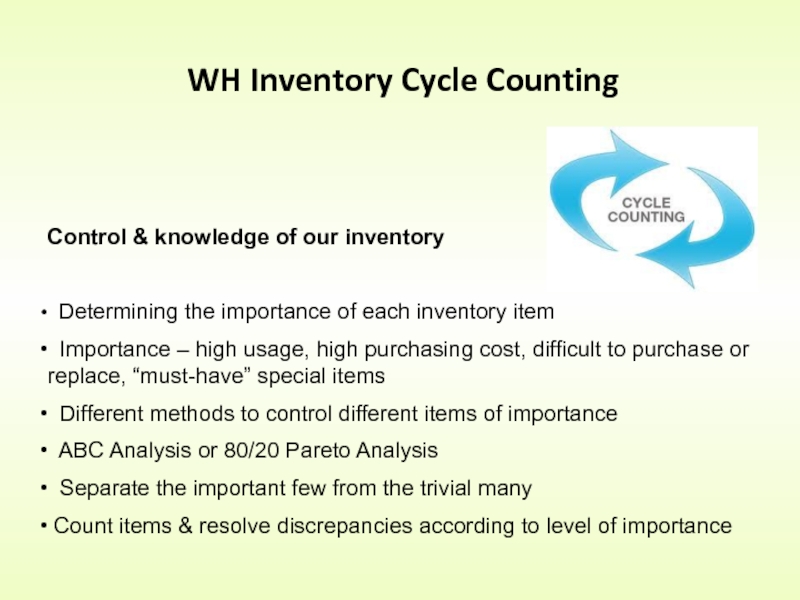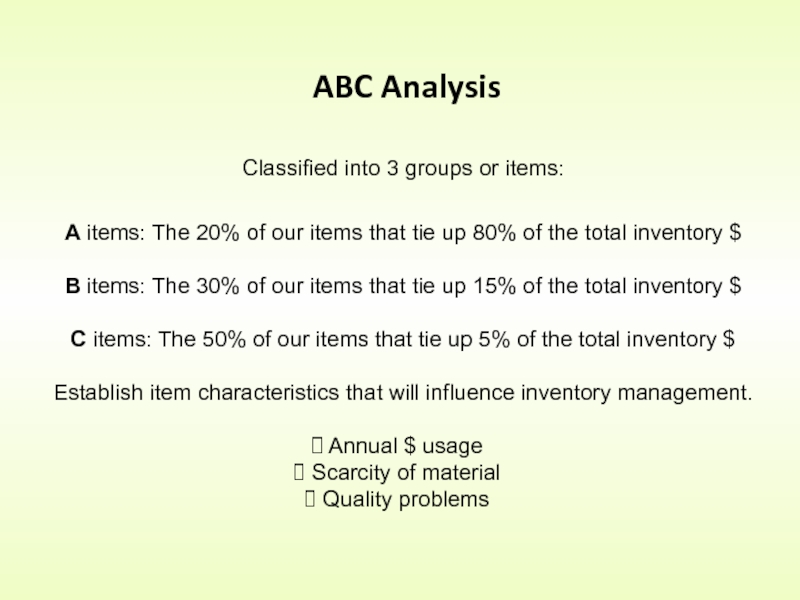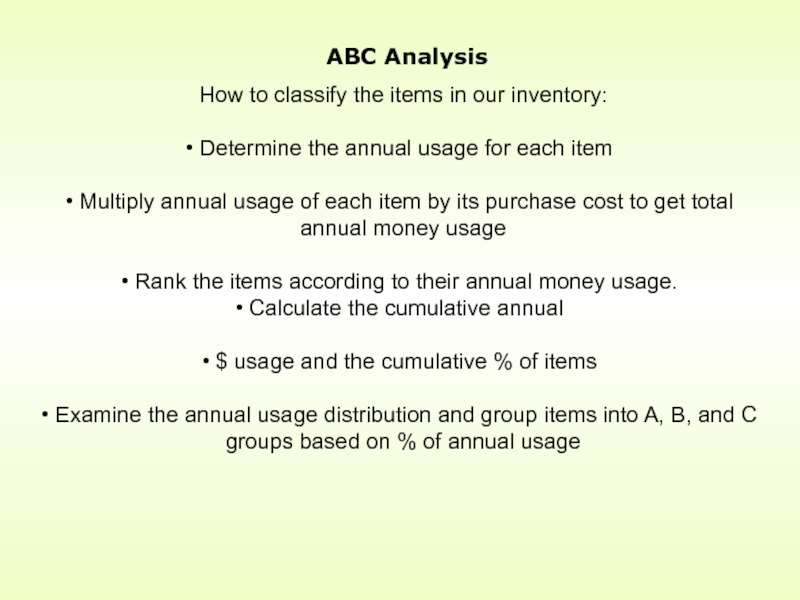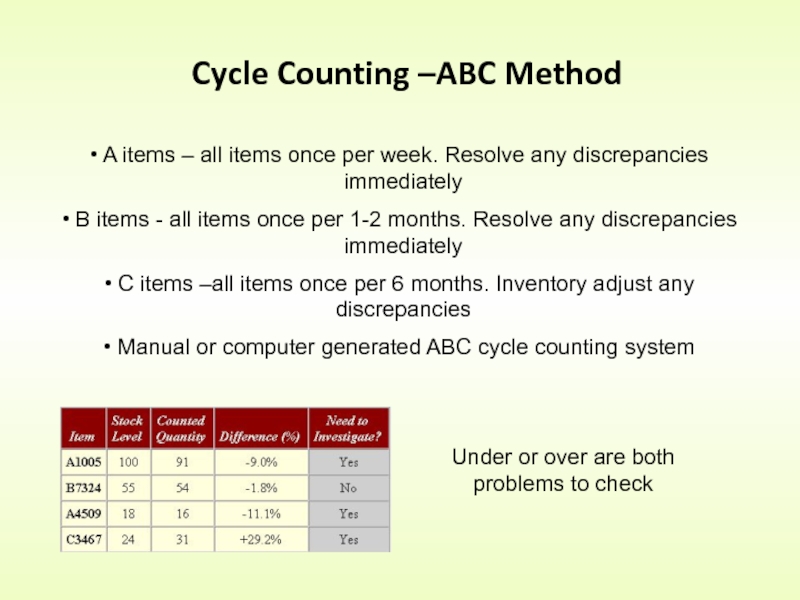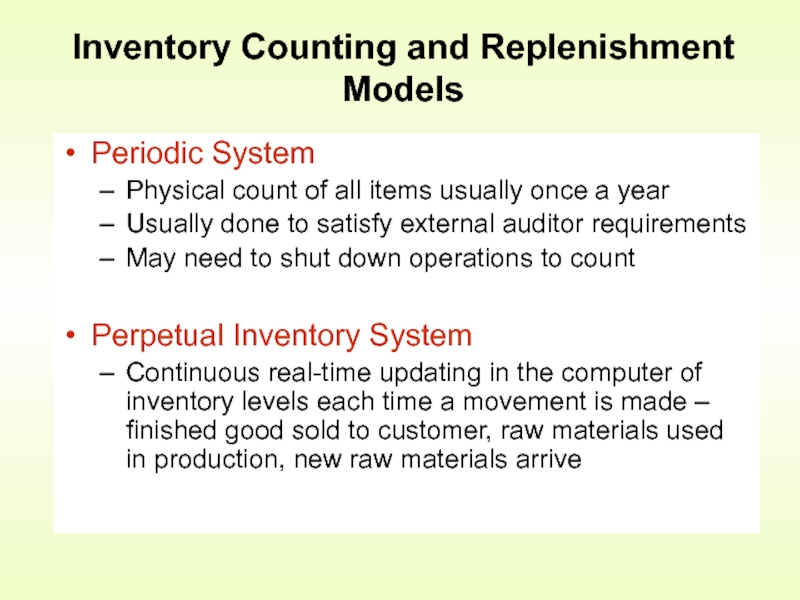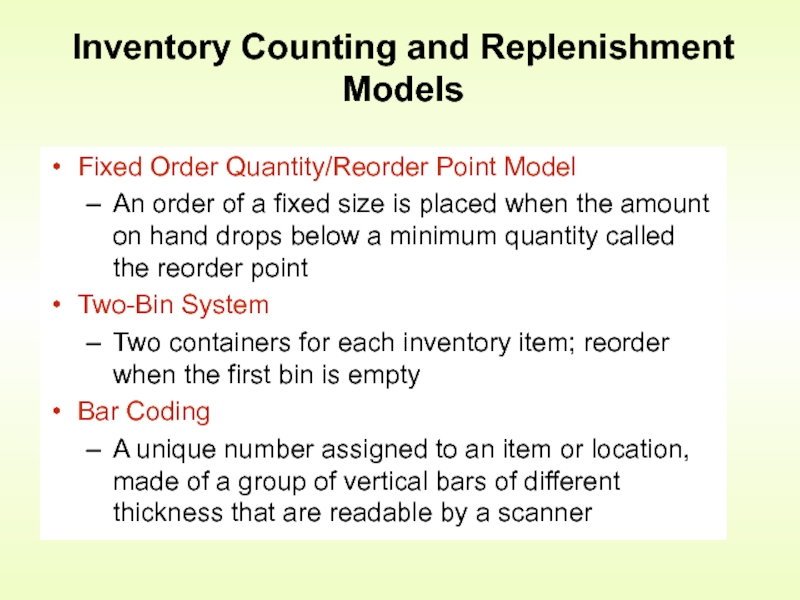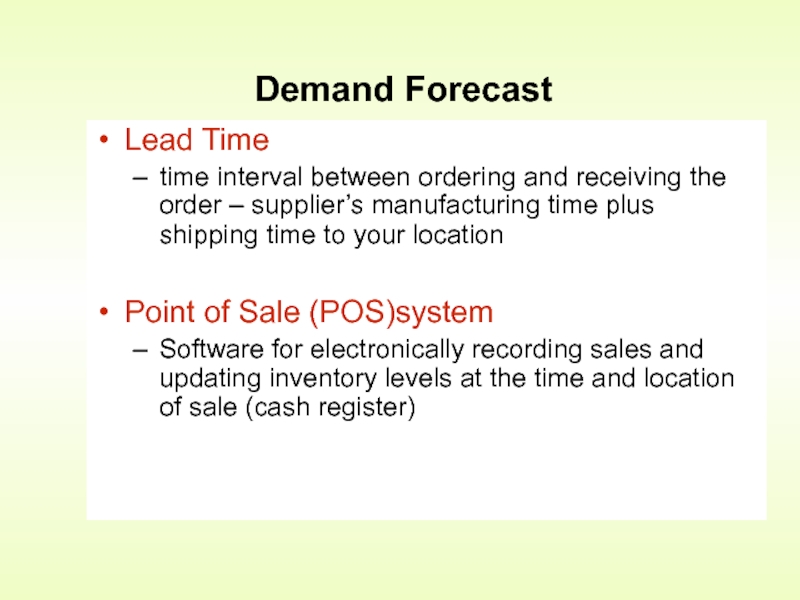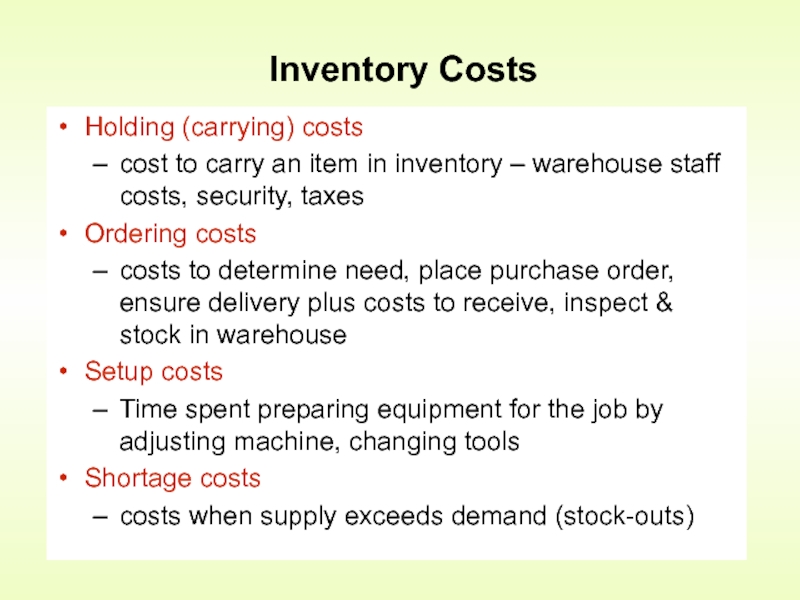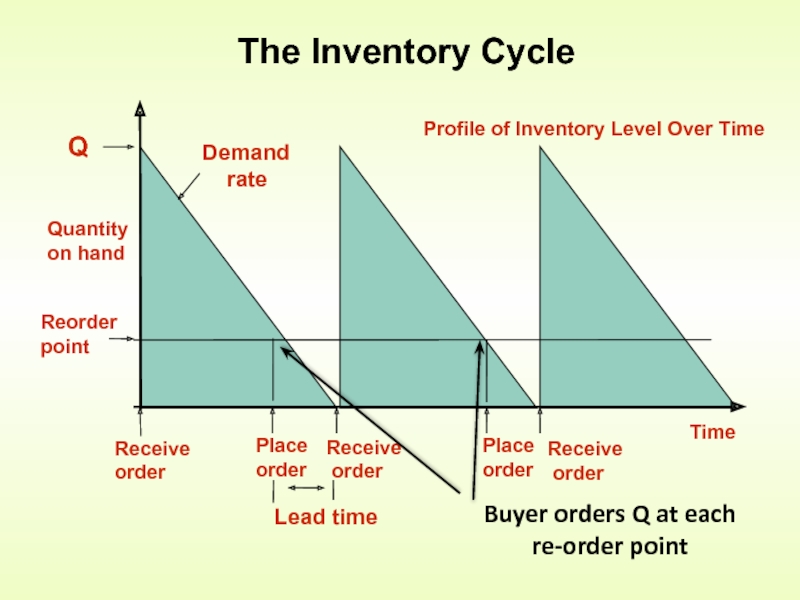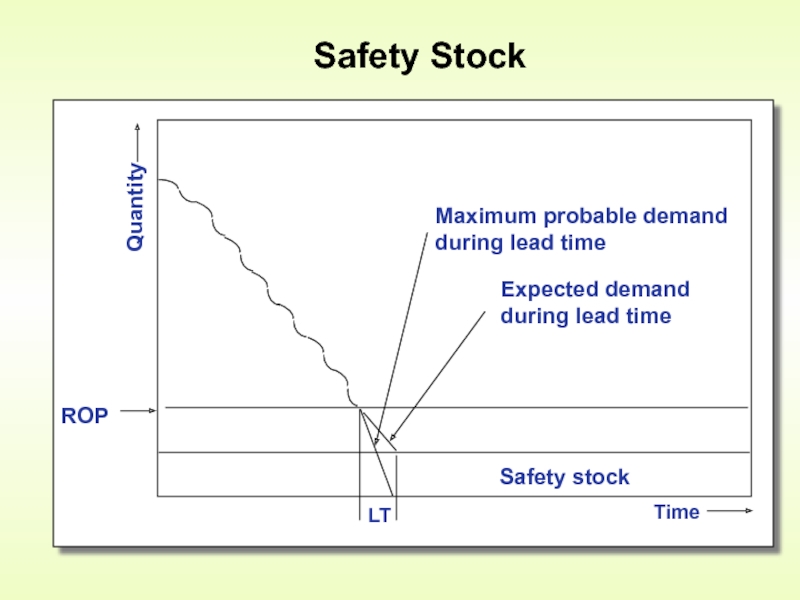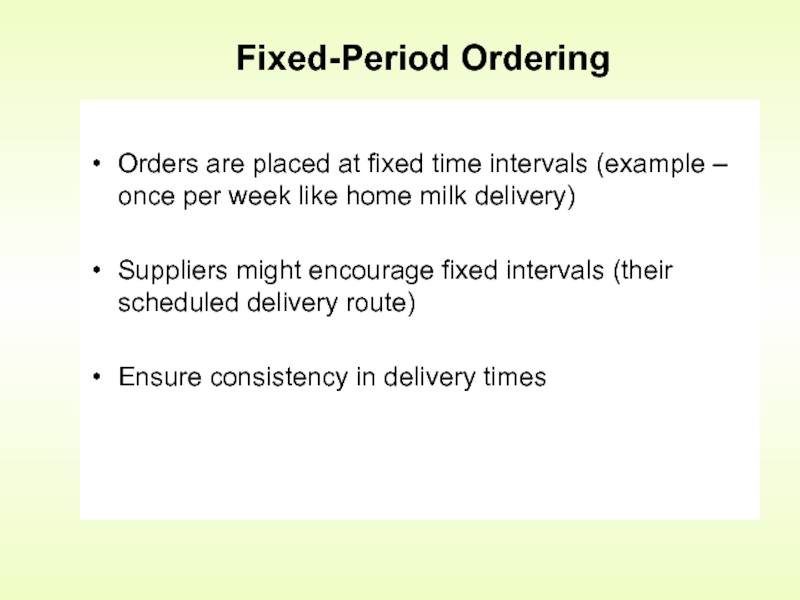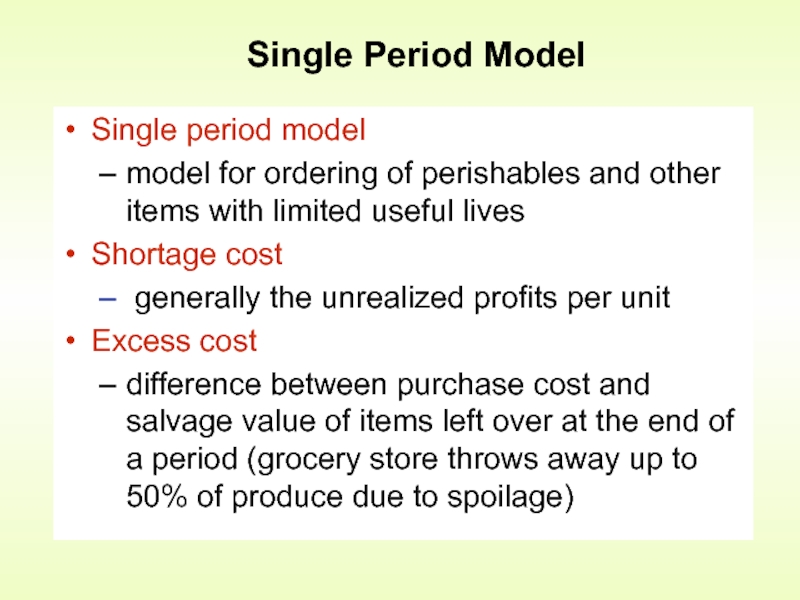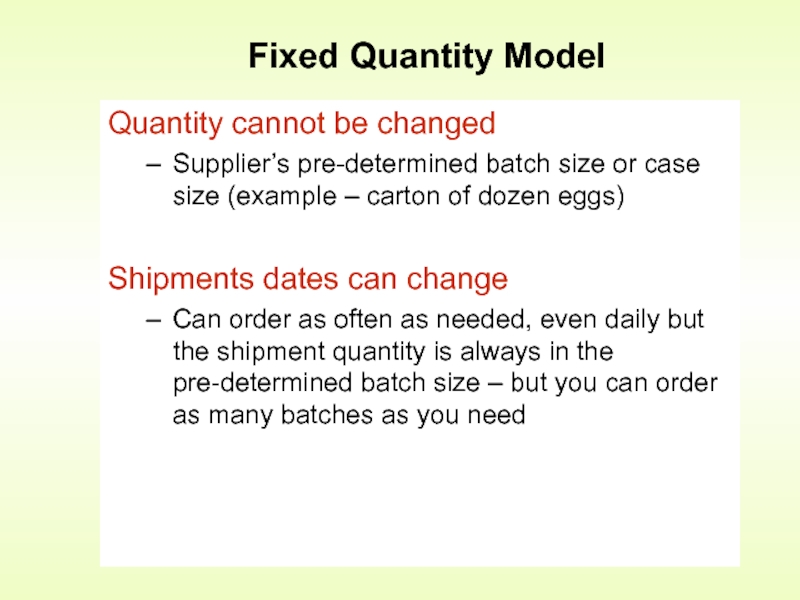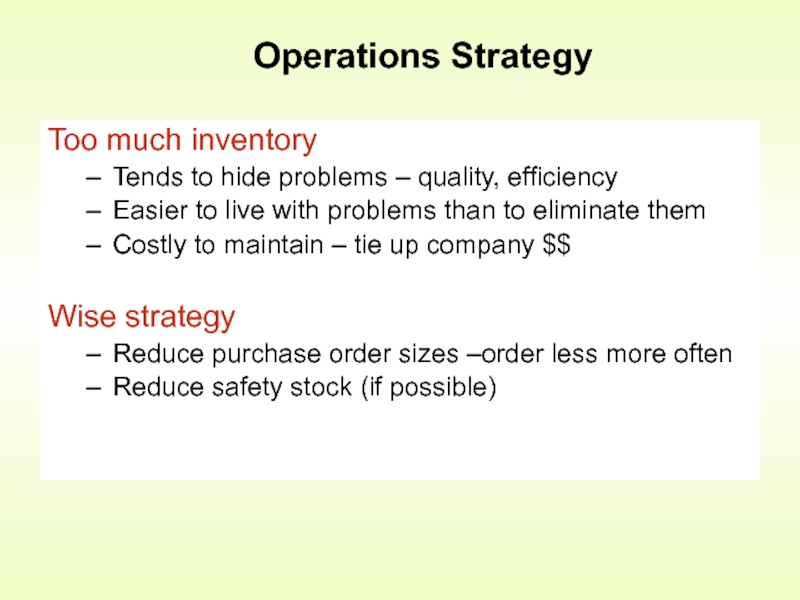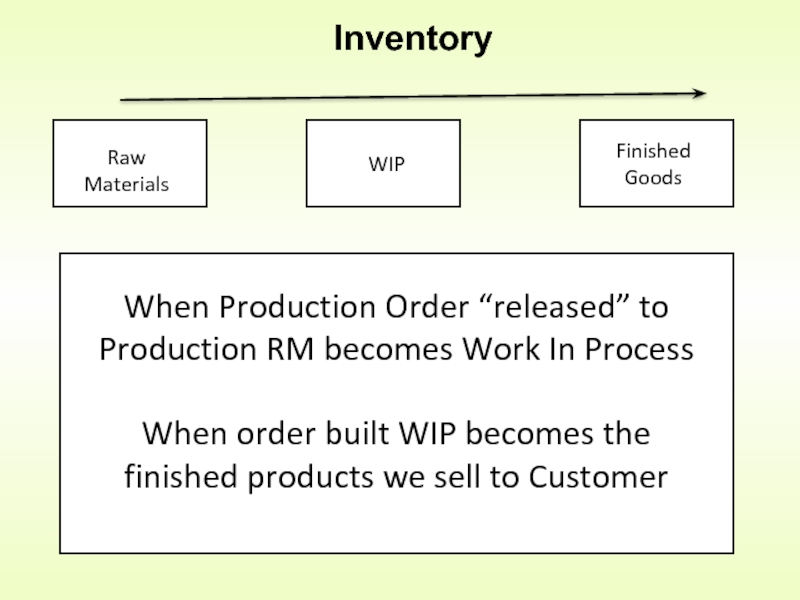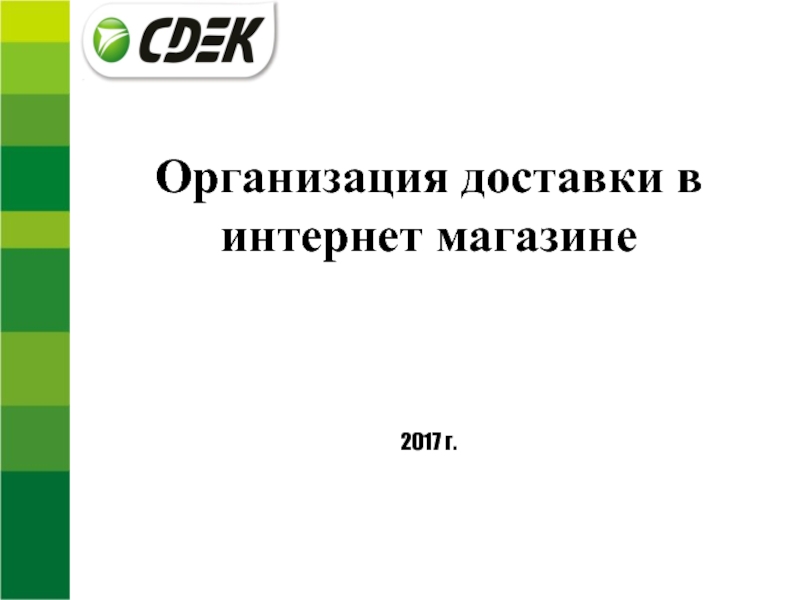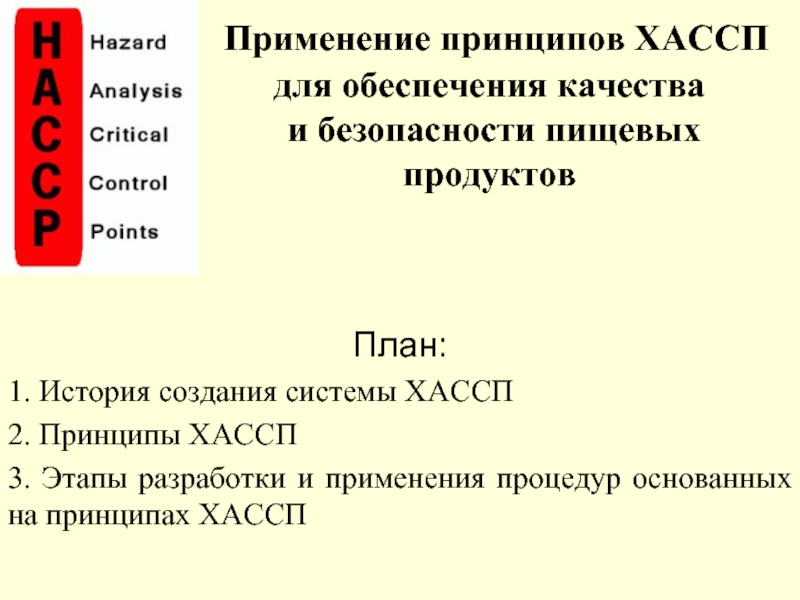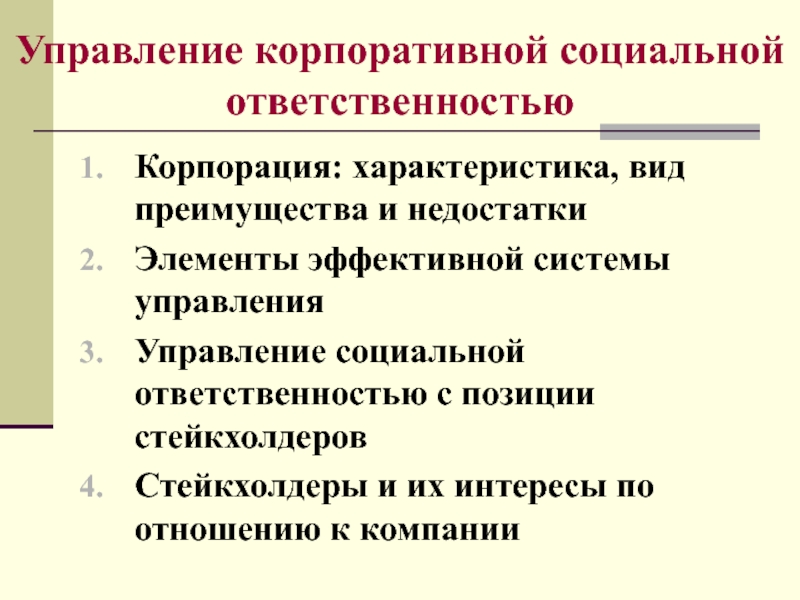- Главная
- Разное
- Дизайн
- Бизнес и предпринимательство
- Аналитика
- Образование
- Развлечения
- Красота и здоровье
- Финансы
- Государство
- Путешествия
- Спорт
- Недвижимость
- Армия
- Графика
- Культурология
- Еда и кулинария
- Лингвистика
- Английский язык
- Астрономия
- Алгебра
- Биология
- География
- Детские презентации
- Информатика
- История
- Литература
- Маркетинг
- Математика
- Медицина
- Менеджмент
- Музыка
- МХК
- Немецкий язык
- ОБЖ
- Обществознание
- Окружающий мир
- Педагогика
- Русский язык
- Технология
- Физика
- Философия
- Химия
- Шаблоны, картинки для презентаций
- Экология
- Экономика
- Юриспруденция
Inventory management. Chapter 12 презентация
Содержание
- 1. Inventory management. Chapter 12
- 2. Introduction Basic question: How much to order
- 3. Objectives of Inventory Control Inadequate control of
- 4. Measurement of Inventory Performance – how often
- 5. Requirements for Effective Inventory Management A system
- 6. ABC Classification A - very important B
- 7. WH Inventory Cycle Counting
- 8. ABC Analysis Classified into
- 9. ABC Analysis How to classify
- 10. Cycle Counting –ABC Method
- 11. Periodic System Physical count of all items
- 12. Fixed Order Quantity/Reorder Point Model An order
- 13. Lead Time time interval between ordering and
- 14. Holding (carrying) costs cost to carry an
- 15. The Inventory Cycle Buyer orders Q at each re-order point
- 16. Safety Stock
- 17. Orders are placed at fixed time
- 18. Single period model model for ordering of
- 19. Quantity cannot be changed Supplier’s pre-determined batch
- 20. Too much inventory Tends to hide problems
- 21. Inventory Raw Materials WIP
Слайд 2Introduction
Basic question:
How much to order & when needed to arrive
Functions
To meet anticipated demand (customer orders)
To protect against stock-outs
To take advantage of volume discounts
To smooth seasonal production requirements
To hedge against expected price increases
Слайд 3Objectives of Inventory Control
Inadequate control of inventories can result in both
Under stocking results in:
Missed deliveries, lost sales, dissatisfied customer, production stoppage
Overstocking results in:
Excessive cost of the inventory
Objectives of Inventory Control
Have the right goods, in sufficient quantitative, in the right place, at the right time
Inventory turnover: Ratio of average cost of goods sold to average inventory investment
Слайд 4Measurement of Inventory Performance – how often do we use up
Ex. We use $12 million worth of raw materials per year
Order and receive all on Jan 1st – warehouse is stuffed full of inventory – takes whole year to use up
Inv Turn = 1 per year
Order monthly requirements only – only need a WH big enough for this small amount
Inv Turn = 12 per year – much less $ tied up in inventory!
Inventory Turn-over
Слайд 5Requirements for Effective Inventory Management
A system to safely store and use
A system to keep track of the inventory and a replenishment system (computer software)
Reliable forecasts of demand and knowledge of lead times (Chapter 3)
Reasonable estimate of inventory holding, ordering, and shortage costs
ABC classification – prioritize each inventory item
Слайд 6ABC Classification
A - very important
B - Important
C - less important
Classifying inventory
Слайд 7
WH Inventory Cycle Counting
Control & knowledge of our inventory
Determining
Importance – high usage, high purchasing cost, difficult to purchase or replace, “must-have” special items
Different methods to control different items of importance
ABC Analysis or 80/20 Pareto Analysis
Separate the important few from the trivial many
Count items & resolve discrepancies according to level of importance
Слайд 8
ABC Analysis
Classified into 3 groups or items:
A items: The
B items: The 30% of our items that tie up 15% of the total inventory $
C items: The 50% of our items that tie up 5% of the total inventory $
Establish item characteristics that will influence inventory management.
Annual $ usage
Scarcity of material
Quality problems
Слайд 9
ABC Analysis
How to classify the items in our inventory:
Multiply annual usage of each item by its purchase cost to get total annual money usage
Rank the items according to their annual money usage.
Calculate the cumulative annual
$ usage and the cumulative % of items
Examine the annual usage distribution and group items into A, B, and C groups based on % of annual usage
Слайд 10
Cycle Counting –ABC Method
A items – all items once
B items - all items once per 1-2 months. Resolve any discrepancies immediately
C items –all items once per 6 months. Inventory adjust any discrepancies
Manual or computer generated ABC cycle counting system
Under or over are both problems to check
Слайд 11Periodic System
Physical count of all items usually once a year
Usually done
May need to shut down operations to count
Perpetual Inventory System
Continuous real-time updating in the computer of inventory levels each time a movement is made – finished good sold to customer, raw materials used in production, new raw materials arrive
Inventory Counting and Replenishment Models
Слайд 12Fixed Order Quantity/Reorder Point Model
An order of a fixed size is
Two-Bin System
Two containers for each inventory item; reorder when the first bin is empty
Bar Coding
A unique number assigned to an item or location, made of a group of vertical bars of different thickness that are readable by a scanner
Inventory Counting and Replenishment Models
Слайд 13Lead Time
time interval between ordering and receiving the order – supplier’s
Point of Sale (POS)system
Software for electronically recording sales and updating inventory levels at the time and location of sale (cash register)
Demand Forecast
Слайд 14Holding (carrying) costs
cost to carry an item in inventory – warehouse
Ordering costs
costs to determine need, place purchase order, ensure delivery plus costs to receive, inspect & stock in warehouse
Setup costs
Time spent preparing equipment for the job by adjusting machine, changing tools
Shortage costs
costs when supply exceeds demand (stock-outs)
Inventory Costs
Слайд 17
Orders are placed at fixed time intervals (example – once per
Suppliers might encourage fixed intervals (their scheduled delivery route)
Ensure consistency in delivery times
Fixed-Period Ordering
Слайд 18Single period model
model for ordering of perishables and other items with
Shortage cost
generally the unrealized profits per unit
Excess cost
difference between purchase cost and salvage value of items left over at the end of a period (grocery store throws away up to 50% of produce due to spoilage)
Single Period Model
Слайд 19Quantity cannot be changed
Supplier’s pre-determined batch size or case size (example
Shipments dates can change
Can order as often as needed, even daily but the shipment quantity is always in the pre-determined batch size – but you can order as many batches as you need
Fixed Quantity Model
Слайд 20Too much inventory
Tends to hide problems – quality, efficiency
Easier to live
Costly to maintain – tie up company $$
Wise strategy
Reduce purchase order sizes –order less more often
Reduce safety stock (if possible)
Operations Strategy
Слайд 21Inventory
Raw Materials
WIP
Finished Goods
When Production Order “released” to Production RM becomes Work
When order built WIP becomes the finished products we sell to Customer
